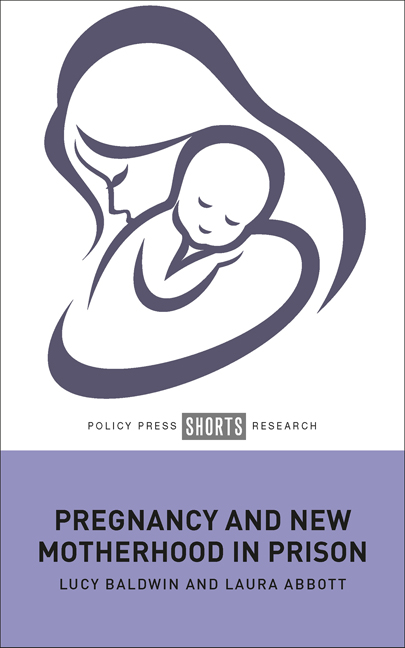Book contents
- Frontmatter
- Dedication
- Contents
- Acknowledgements
- ONE Context and landscape of pregnancy and new motherhood in prison
- TWO How we came to be here: 100 years of criminalised motherhood
- THREE The ‘journey’ to incarcerated motherhood
- FOUR Motherhood confined
- FIVE The persisting pain of incarcerated pregnancy and new motherhood
- SIX Personal experiences of pregnancy and motherhood in prison and the value of the voluntary sector in challenging the system
- SEVEN ‘Learning lessons’: discussion, concluding thoughts and recommendations
- Notes
- References
- Index
TWO - How we came to be here: 100 years of criminalised motherhood
Published online by Cambridge University Press: 03 April 2024
- Frontmatter
- Dedication
- Contents
- Acknowledgements
- ONE Context and landscape of pregnancy and new motherhood in prison
- TWO How we came to be here: 100 years of criminalised motherhood
- THREE The ‘journey’ to incarcerated motherhood
- FOUR Motherhood confined
- FIVE The persisting pain of incarcerated pregnancy and new motherhood
- SIX Personal experiences of pregnancy and motherhood in prison and the value of the voluntary sector in challenging the system
- SEVEN ‘Learning lessons’: discussion, concluding thoughts and recommendations
- Notes
- References
- Index
Summary
‘It is barbaric what happened to me, like something out of the dark ages.’
Louise Powell, 2023Introduction
This chapter explores a historical perspective of pregnancy and new motherhood in prison and makes comparisons of the treatment and conditions from the past 100 years to the present day. We draw upon the similarities of the environment, care needs and experiences of women from the 1900s to the 21st century and describe the findings from campaigners’ reviews and research. We discuss how these campaigns and reviews of prison conditions from 100 years ago mirror the findings of our own research and that of modern-day activists and campaigners for reform.
It is perhaps accepted wisdom that modern society has long favoured the male gender, a status quo that has contributed to the positionality of women and their experiences in society. Zedner (1991) rightly argues that gendered notions of how women, especially mothers, should and, importantly, should not behave are heavily influenced by traditional feminine (and masculine) ideology. Johnstone (2019) highlights how this translated to firmly established and gendered roles becoming established, particularly with the advancement of industrialisation and capitalism. Women’s role as homemaker and nurturer became an established norm, and parenting and child-raising were (and to some extent are still) deemed to be the woman’s role. To understand the connection between criminalised motherhood, imprisonment, patriarchy, religion, culture and the CJS, it is essential to acknowledge the intersectionality that shapes women’s experiences. Throughout history and to this day, these factors contribute significantly to the disadvantages and discrimination faced by women in the CJS. Building upon a brief historical overview, the authors will utilise their research to present a contemporary perspective. As in the rest of the book, the focus remains on amplifying women’s voices as they share their lived experiences.
- Type
- Chapter
- Information
- Pregnancy and New Motherhood in Prison , pp. 24 - 35Publisher: Bristol University PressPrint publication year: 2023



